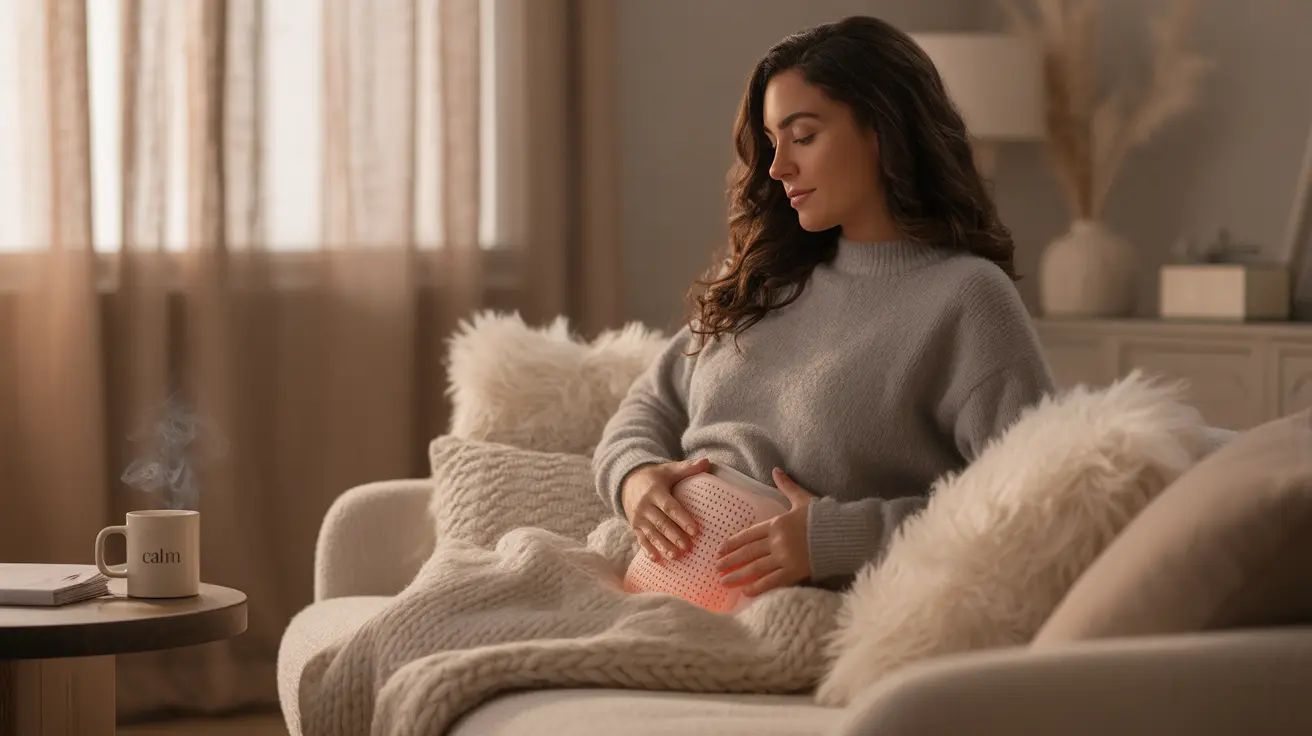Menstrual cramps affect millions of women each month, ranging from mild discomfort to severe pain that can disrupt daily activities. Understanding effective period cramp relief methods can make a significant difference in managing these symptoms and maintaining quality of life during menstruation.
This comprehensive guide explores evidence-based treatments and lifestyle modifications that can help alleviate menstrual pain, from medication to natural remedies and practical lifestyle changes.
Over-the-Counter Pain Relief Options
Nonsteroidal anti-inflammatory drugs (NSAIDs) are the first-line treatment for menstrual cramps. These medications work by reducing the production of prostaglandins, the compounds responsible for causing uterine contractions and pain.
Common effective options include:
- Ibuprofen (Advil, Motrin)
- Naproxen (Aleve)
- Aspirin
- Acetaminophen (Tylenol)
For best results, start taking these medications at the first sign of cramps or just before your period begins. Always follow the recommended dosage and consult with a healthcare provider about the most appropriate option for your situation.
Heat Therapy for Menstrual Pain
Applying heat to the lower abdomen is a well-documented method for relieving menstrual cramps. Heat helps relax the uterine muscles and improves blood flow, which can significantly reduce pain and discomfort.
Effective Heat Application Methods
Several heat therapy options are available:
- Electric heating pads
- Microwaveable heat packs
- Adhesive heat patches
- Warm baths
- Hot water bottles
Apply heat for 15-20 minutes at a time, being careful to protect your skin from direct heat exposure. Many women find combining heat therapy with over-the-counter pain medication provides optimal relief.
Exercise and Physical Activity
While exercise might be the last thing on your mind during menstrual cramps, gentle physical activity can actually help alleviate pain. Movement increases blood circulation and releases endorphins, natural pain-relieving hormones.
Beneficial exercises include:
- Gentle walking
- Light stretching
- Yoga
- Swimming
- Low-impact aerobics
Dietary Approaches to Managing Cramps
Your diet can significantly impact the severity of menstrual cramps. Certain foods may help reduce inflammation and pain, while others might worsen symptoms.
Foods That May Help
Include these in your diet:
- Omega-3 rich foods (fatty fish, nuts, seeds)
- Magnesium-rich foods (leafy greens, bananas)
- Anti-inflammatory foods (berries, turmeric)
- Whole grains
- Lean proteins
Foods to Avoid
Consider limiting:
- Caffeine
- Alcohol
- Salty foods
- Processed foods
- Sugary snacks
When to Seek Medical Help
While menstrual cramps are common, severe pain isn't normal and may indicate underlying conditions. Consult a healthcare provider if you experience:
- Pain that interferes with daily activities
- Cramps that last longer than usual
- Heavy bleeding
- Pain that doesn't respond to over-the-counter treatments
- Sudden changes in menstrual pain patterns
Frequently Asked Questions
- What are the best over-the-counter medications for period cramp relief, and how do they work?
NSAIDs like ibuprofen and naproxen are most effective for period cramps. They work by blocking prostaglandin production, which causes uterine contractions and pain. Take them at the first sign of cramps or just before your period starts for best results.
- How effective is applying heat to the abdomen for menstrual pain, and what are the best ways to use heat therapy at home?
Heat therapy is highly effective for menstrual pain relief. Use heating pads, hot water bottles, or warm baths for 15-20 minutes at a time. Heat helps relax uterine muscles and improves blood flow, reducing cramping and discomfort.
- Can exercise really help with period cramps, and what types of physical activity are most beneficial?
Yes, exercise can help reduce period cramps by releasing endorphins and improving circulation. Gentle activities like walking, yoga, swimming, and light stretching are most beneficial. Start slowly and listen to your body's limits.
- What foods and dietary changes can help reduce period cramps or make them worse?
Anti-inflammatory foods rich in omega-3s, magnesium, and fiber can help reduce cramps. Avoid caffeine, alcohol, and processed foods, which may worsen symptoms. Stay hydrated and maintain a balanced diet throughout your cycle.
- When should I see a doctor about my period cramps, and what symptoms are considered severe?
See a doctor if cramps severely impact daily activities, last longer than usual, or don't respond to over-the-counter treatments. Severe symptoms include extreme pain, heavy bleeding, fever, or significant changes in your normal menstrual pattern.




